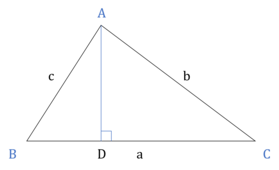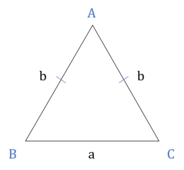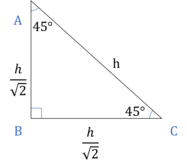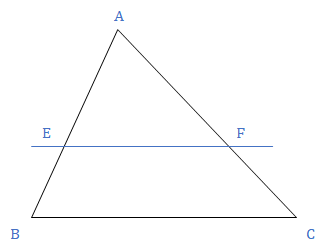Concept: Geometry Basics
Point: It is an exact location. It is a fine dot which has neither length nor breadth nor thickness but has position i.e. it has no magnitude.
Line: A line is a set of all the points in one dimension. It can be extended in both the directions; hence, its length is infinite. A line does not have either width or thickness.
Intersecting lines: Two lines having a common point are called intersecting lines. The common point is known as the point of intersection.
Line Segment: The straight path joining two points A and B is called a line segment AB. It has end points and a definite length.
Ray: A line segment which can be extended in only one direction is called a ray.
Concurrent lines: If two or more lines intersect at the same point, then they are known as concurrent lines.
Plane: A plane is set of all the points in two dimensions. It does not have any thickness but is indefinitely extended in all directions.


In the figure above, the angle is represented as ∠AOB. OA and OB are the arms of ∠AOB. Point O is the vertex of ∠AOB. The amount of turning from one arm (OA) to other (OB) is called the measure of the angle (AOB).
Right angle: An angle whose measure is 90° is called a right angle.

Acute angle: An angle whose measure is less than one right angle (i.e. less than 90°), is called an acute angle.

Obtuse angle: An angle whose measure is more than one right angle and less than two right angles (i.e. less than 180° and more than 90°) is called an obtuse angle.

Straight angle: An angle that measure exactly 180° is called a straight angle. The angle shown in the figure below is a straight angle.

Reflex angles: An angle whose measure is more than 180° and less than 360° is called a reflex angle.

Complementary angles: If the sum of the two angles is one right angle (i.e. 90°), they are called complementary angles. Therefore, the complement of an angle θ is equal to 90° - θ.

Supplementary angles: Two angles are said to be supplementary, if the sum of their measures is 180°. Therefore, supplement of an angle θ is 180° - θ.

Bisector of an angle: If a ray or a straight line passing through the vertex of that angle, divides the angle into two angles of equal measurement, then that line is known as the bisector of that angle.

A point on an angle bisector is equidistant from both the arms.

In the figure above, Q and R are the feet of perpendiculars drawn from P to OB and OA. It follows that PQ = PR.
Vertically opposite angles: When two straight lines intersect each other at a point, the pairs of opposite angles so formed are called vertically opposite angles.
In the above figure, ∠1 and ∠3, ∠2 and ∠4 are vertically oppostie angles.
Vertically opposite angles are always equal.

Adjacent angle: When two angles share a common side and a common vertex, we get two adjacent angles. For two angles to be adjacent, no angles should be inside the other.

If the sum of two adjacent angles is 180° then these angles form a linear pair.
Angles making a linear pair are supplementary to each other.
Perpendicular lines: Two lines intersecting each other at 90° are said to be perpendicular to each other.

Parallel lines: Two lines are parallel if they are coplanar and they do not intersect each other even if they are extended on either side.

Two lines in the same plane that are perpendicular to a given line are parallel to each other.

Line segment bisector: A line segment bisector which makes an angle of 90° with the given segment is known as the perpendicular bisector for the given segment.

Any point of the perpendicular bisector is at an equal distance from both the ends of the given line segment.

Here, PA = PB
Distance of a point from a line means the length of the perpendicular drawn from the point to the line. It is the shortest distance of the point from the line.

Distance between L1 and point P is PX.
Distance between two parallel lines is the perpendicular distance between them.

Distance between L1 and L2 is XY.
Distance between two coplanar but non-parallel lines is always zero, because these lines intersect each other at some point.
Transversal: A transversal is a line that intersects (or cuts) two or more coplanar lines at distinct points.

In the above, figure, a transversal t is intersecting two parallel lines, l and m, at A and B, respectively.
Angles formed by a transversal of two parallel lines:

In the above figure, L1 and L2 are two parallel lines intersected by a transversal. The following properties of the angles can be observed:
- Vertically opposite angles are equal: a = d, b = c, e = h and f = g
- Alternate interior angles are equal: c = f and d = e
- Alternate exterior angles are equal: a = h and b = g
- Corresponding angles are equal: a = e, b = f, c = g and d = h
- Interior angles on the same side of the transversal are supplementary: c + e = 180° and d + 180°
- Exterior angles on the same side of the transversal are supplementary: a + g = 180° and b + h = 180°

For a set of three or more parallel lines (L1, L2 and L3 for example), and two transversals (T1 and T2 for example), the ratio of the lengths of the intercepts of any transversal is equal
i.e., =
Triangles are closed figures containing three angles and three sides.

Altitude: Line joining a vertex and perpendicular to the opposite side.
Median: Line joining a vertex and mid-point of the opposite side.
Angle Bisector: Line drawn from a vertex which bisects the given internal angle.
AD here is the altitude from vertex A. AE is the median.
Acute Triangle

All angles are < 90°
All general properties of ∆s apply.
Check for an Acute triangle.
In a ∆, if c is the longest side and c2 < a2 + b2, then it is an Acute triangle.
Right Triangle

Exactly one angle is 90°.
All general properties of ∆s apply.
Hypotenuse2 = Base2 + Perpendicular2
Area = × AB × BC
Altitude BD =
Altitude BD =
Midpoint of the hypotenuse is equidistant from the three vertices i.e. EA = EB = EC. It implies that the circumradius of a right-angled triangle is half of the hypotenuse.
⇒ R =Inradius =
Check for a Right triangle.
In a ∆, if c is the longest side and c2 = a2 + b2, then it is a Right triangle.
Obtuse Triangle

Exactly one angle is > 90°.
All general properties of ∆s apply.
Check for an Obtuse triangle.
In a ∆, if c is the longest side and c2 > a2 + b2, then it is an Obtuse triangle.
Scalene Triangle
No 2 sides are equal.
No 2 angles are equal.
All the general properties of a triangle apply.
Isosceles Triangle

Exactly 2 sides are equal.
The angles opposite to the equal sides are also equal.
All the general properties of a triangle apply.
Altitude from the vertex containing equal sides is the Median as well the Angle Bisector (i.e. it divides the in ∆ two equal halves).
In an isosceles triangle, all the four points, viz, circumcenter, incenter, centroid and orthocenter lie on the median drawn from the vertex contained by equal sides to the non-equal side.
Equilateral Triangle

All sides are equal (a).
All angles are equal to 60°.
All the general properties of a triangle apply.
Height of the triangle = a
Area of the triangle = a2
Inradius =
Circumradius =
Altitudes, Medians, Angle Bisectors are all same.
In an equilateral triangle all the four points viz, circumcenter, incenter, centroid and orthocenter coincide.
Equilateral triangle has the maximum area, out of all the triangles that can be inscribed in a given circle.
30° – 60° – 90° triangle

Side opposite to 30° = half of hypotenuse.
Side opposite to 60° = × hypotenuse
45° – 45° – 90° triangle

Each of the smaller sides = × hypotenuse.
Hypotenuese = √2 × side

The line joining the mid-points of any two sides of a triangle is parallel to the third side and half of it.
⇒ FE ∥ BC, DE ∥ AB, DF ∥ AC
⇒ FE = BC/2, DE = AB/2, FD = AC/2If we join the midpoints of three sides of a triangle, we get 4 triangles of equal areas.
i.e., area ∆DEF = area ∆AFE = area ∆BDF = area ∆DEC = ¼ (area ∆ABC)
Corollary: If a line parallel to the base and passes through the midpoint of one side, it will pass through the midpoint of the other side also.
In a triangle if AD is the anlge bisector of ∠A meeting BC at D, then
=
A line drawn parallel to one of the three sides of a triangle divides the other 2 sides in same proportion.

Conversely, If E and F are two points dividing AB and AC in same proportion, then EF will be parallel to BC.
Here, triangle AEF is similar to triangle ABC.
Line joining the mid-points of two sides is parallel to third side.